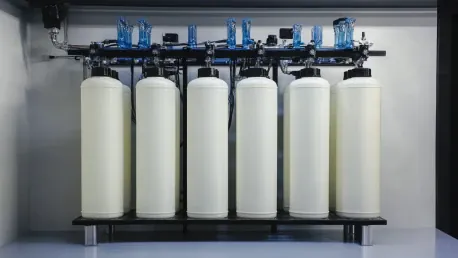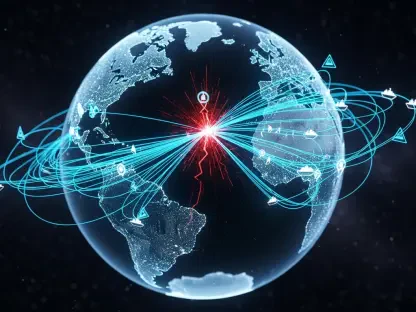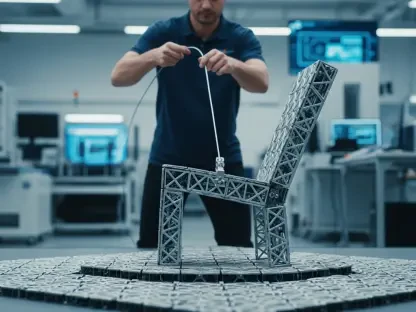Biomimicry, the practice of emulating natural models to solve human problems, has a storied history of application across various fields such as engineering, architecture, and product design. Engineers at MIT are now deriving inspiration from Mobula Rays to create more efficient industrial water filtration systems. This article delves into the influence of nature on technological innovation, focusing on the innovative use of biomimicry to address modern challenges.
Nature-Inspired Technologies
Historical Examples of Biomimicry
Throughout history, engineers and designers have continually sought inspiration from nature to develop new technologies that address pressing human needs. One of the most compelling examples lies in the realm of flight, where early aviation pioneers meticulously studied birds to create the first airplanes. The shape of wings, the concept of lift, and the navigation techniques seen in birds were all critical to the development of human flight technology. Equally notable is the implementation of sustainable agriculture systems modeled after prairie ecosystems. Prairies naturally maintain soil health and biodiversity through intricate root systems and plant species relationships, offering a blueprint for sustainable farming practices that support long-term productivity and ecological balance.
Another fascinating example is found in the development of water mixing systems, where engineers have looked to the spiral flows observed in flowers. This natural phenomenon inspired the design of devices that achieve efficient mixing and aeration in water treatment facilities. It highlights the innate efficiency found in natural systems. These historical applications underscore the enduring utility of biomimicry, demonstrating that learning from nature’s time-tested designs can lead to practical and innovative solutions in various engineering disciplines.
Modern Applications of Biomimicry
In recent years, the adoption of biomimicry has accelerated, leading to groundbreaking innovations that span multiple industries. One of the most well-known examples is Velcro, which was inspired by burr seeds that adhere to animal fur with tiny hooks. This simple yet ingenious mechanism has found extensive applications, from fashion and outdoor gear to aerospace technology, where secure yet easily detachable fastenings are invaluable. Similarly, the honeycomb structure created by bees has profoundly impacted materials science, inspiring lightweight yet robust materials. By mimicking this natural design, engineers have developed components used in the automotive and aerospace industries, leading to enhanced performance and reduced weight.
These modern instances attest to biomimicry’s potential to generate sustainable solutions that align with contemporary technological demands and environmental considerations. They emphasize how observing and replicating nature’s strategies can yield innovative products that push the boundaries of what’s possible in engineering and design. As awareness of biomimicry grows, the breadth of its application is expected to expand, driving forward new advancements grounded in nature’s wisdom.
Mobula Rays as a Model
Unique Filter-Feeding Technique
The innovative potential of biomimicry is perhaps most evident in the recent work of researchers at MIT, who have turned to the ocean for inspiration in developing advanced water filtration systems. Specifically, the focus has been on Mobula Rays, remarkable creatures that utilize a unique filter-feeding technique to efficiently separate plankton from seawater. Unlike traditional filters that rely on sieves or membranes prone to clogging, Mobula Rays use specialized structures within their mouths to capture plankton while allowing water to flow freely through their gills. This natural prowess presents a significant opportunity to revolutionize industrial water filtration by providing a model for systems that minimize maintenance and enhance efficiency.
Through in-depth anatomical studies, MIT researchers have uncovered how the Mobula Ray’s filter-feeding mechanism operates on both micro and macro scales. They identified that the comb-like plates lining the ray’s mouth are crucial for this process, as they create flow patterns that direct plankton into the gullet while permitting water to exit through the gills. Understanding these mechanics has offered a blueprint for engineers to design water filtration systems that mimic the ray’s efficient and sustainable filtering abilities.
Anatomy and Functionality
The detailed examination of the Mobula Ray’s anatomy has unveiled essential insights into the functionality of its intricate filter-feeding system. Central to this system are the ray’s comb-like plates, which are finely tuned to balance between feeding and breathing. These plates function akin to a sieve, but with the unique ability to create flow dynamics that prevent clogging, a common issue in conventional water filters. The dimensions and spacing of these plates play a pivotal role in ensuring that plankton, even those of varying sizes, are trapped and directed toward the ray’s digestive tract. In contrast, water can pass through the gills unimpeded, supporting respiration.
This natural filtration mechanism’s elegance lies in its simplicity and effectiveness, offering a powerful model for creating advanced filtration systems. For engineers, replicating this design using modern manufacturing techniques, such as 3D printing, has opened new avenues for innovation. By customizing the dimensions and configurations of the artificial plates, they can achieve optimal performance tailored to specific filtration needs. This bio-inspired approach promises to overcome many limitations of existing water filtration technologies, marking a transformative step toward more sustainable and efficient solutions.
Creation of Mobula-Inspired Filters
Design and Testing
Inspired by the Mobula Ray’s natural filtration apparatus, the MIT research team embarked on developing a water filter that leverages biomimicry principles. The team’s utilization of 3D printing technology was instrumental in creating structures that faithfully replicate the ray’s filtering plates. These printed plates were designed to mimic the fine, comb-like arrangement found in Mobula Rays, enabling the new filter to replicate the same filtering process. Through rigorous testing, researchers discovered that water flows optimally through the filter at specific speeds, much like the natural water currents experienced by the rays.
The critical finding from these tests was the formation of vortices within the channels of the filter, which effectively entrapped particles and directed them along the flow paths. This phenomenon parallels the way Mobula Rays filter plankton from seawater, thus proving the viability of the biomimetic design. These advancements suggest that 3D-printed filters, inspired by Mobula Rays, could significantly enhance cross-flow filtration systems across various industries. The research underscores the potential of such bio-inspired innovations to yield practical, high-performance solutions that address contemporary environmental and industrial challenges.
Potential Applications
The application potential for Mobula-inspired filters is vast, extending across multiple sectors where efficient water filtration is essential. In wastewater treatment plants, these innovative filters could drastically improve the separation of contaminants from water, enhancing overall treatment efficiency and reducing maintenance costs. Moreover, desalination facilities, which are pivotal in providing fresh water in arid regions, could benefit from incorporating these bio-inspired filters to optimize the removal of salt and other impurities, thereby increasing water yield and system longevity.
Household water filtration systems also stand to benefit from this technology, offering consumers more effective and sustainable options for ensuring clean water. By adopting Mobula-inspired designs, these systems could provide higher filtration efficiency while being less prone to clogging, thus extending their operational life and reducing the need for frequent replacements. This broad applicability highlights the transformative impact that biomimicry can have on water conservation efforts worldwide, promoting more sustainable practices and helping to address the pressing global water scarcity issues.
Corporate Examples of Biomimicry
Ford’s Honeycomb Cargo Shelf
Corporations have increasingly embraced biomimicry to drive innovation and sustainability within their product development processes. A prime example is Ford’s creation of a lightweight cargo shelf for its EcoSport SUV, inspired by bees’ honeycomb structures. The hexagonal design of honeycombs, known for its strength and minimal material use, was replicated using 100 percent recycled paper, resulting in a high-strength, low-weight cargo shelf. This innovation not only enhances the vehicle’s fuel efficiency by reducing weight but also exemplifies the intersection of ecological responsibility and engineering ingenuity.
Ford’s adoption of this nature-inspired design underscores the significance of biomimicry in creating practical, environmentally friendly solutions. By leveraging the inherent properties of honeycombs, engineers were able to produce a component that meets stringent performance criteria without compromising sustainability goals. This approach reflects a broader trend within the automotive industry to integrate sustainable materials and processes, reducing environmental impact while delivering high-performing products.
Procter & Gamble’s Enzyme Research
Procter & Gamble (P&G) has also demonstrated the power of biomimicry in enhancing the performance of consumer products. In partnership with Basecamp Research, P&G embarked on a project to develop high-performance enzymes for cold water cleaning, inspired by organisms that thrive in cold environments. These enzymes, derived from nature’s own solutions to cold adaptation, promise to improve cleaning efficiency while minimizing energy consumption, as cold water washing typically requires less energy than hot water cycles. This innovation signifies a step forward in creating environmentally conscious cleaning products that do not compromise on performance.
P&G’s initiative highlights the potential of biomimicry to address both consumer needs and environmental concerns effectively. By studying and mimicking the adaptations of cold-dwelling organisms, they have been able to develop enzymes that function optimally in lower temperatures, thus reducing the energy footprint of household cleaning. This example illustrates the broader applicability of biomimicry in consumer goods, where nature-inspired solutions can lead to significant advancements in product efficiency and sustainability, benefiting both consumers and the environment.
The Future of Biomimicry
Expanding Applications
The future of biomimicry is poised for significant expansion as industries increasingly recognize its potential to yield sustainable and innovative solutions. The shift from simple concept adaptations to sophisticated designs and technologies reflects a growing investment in understanding and replicating nature’s problem-solving strategies. This paradigm shift points to a broader recognition that nature’s designs, honed over millions of years, offer valuable insights that can drive scientific and technological advancement in ways that align with sustainability goals. With areas such as environmental engineering, materials science, and robotics already witnessing the benefits, the horizon for future applications is vast and promising.
As technology continues to develop, the scope of biomimicry will likely extend to more complex systems and applications. This includes the creation of advanced materials that mimic the structural properties of biological entities, leading to innovations that are both efficient and resilient. Additionally, the integration of biomimetic designs in urban planning and architecture could revolutionize how cities are built, promoting sustainability and enhancing the quality of urban life. The emphasis will be on creating systems that not only perform optimally but also coexist harmoniously with the natural environment, paving the way for a future where human activities are in balance with the Earth’s ecosystems.
Market Projections
Biomimicry, the practice of emulating natural models to solve human problems, has a long history of application in various fields, including engineering, architecture, and product design. This concept revolves around taking clues from nature’s time-tested patterns and strategies to address modern human challenges, often yielding innovative and efficient solutions.
At the Massachusetts Institute of Technology (MIT), engineers are currently drawing inspiration from the Mobula Ray, a species known for its graceful and efficient movement through water, to revolutionize industrial water filtration systems. By mimicking the unique propulsion and filtering mechanisms of this aquatic creature, the MIT team aims to create water filtration systems that are not only more efficient but also more sustainable.
The influence of nature on technological innovation is profound. Biomimicry has led to breakthroughs like the development of Velcro, inspired by the way burrs stick to animal fur, and the creation of more aerodynamic vehicles, modeled after the sleek shapes of birds and fish.
The current focus on Mobula Rays is another example of how biomimicry is being used to tackle contemporary problems, demonstrating the immense potential of nature-inspired technology. By examining and emulating the natural world’s ingenious solutions, scientists and engineers can develop groundbreaking technologies that improve human lives while promoting sustainability.









